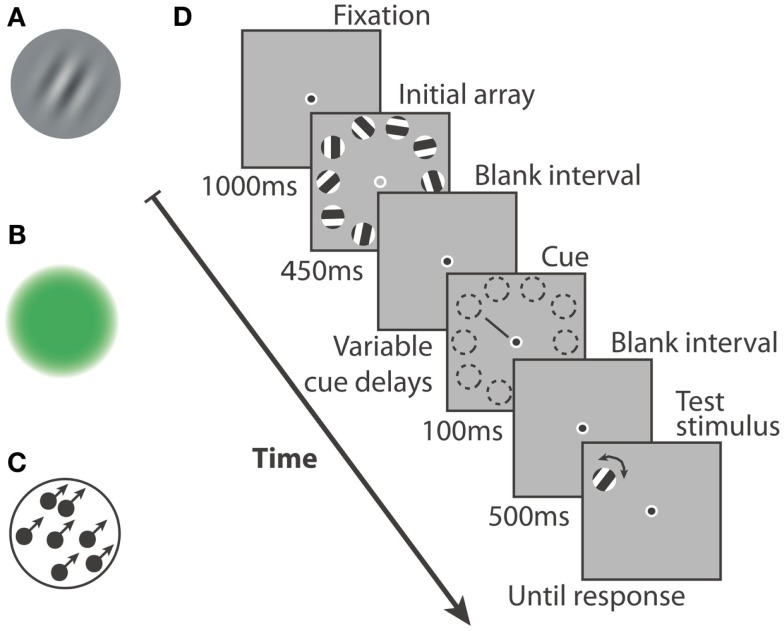Figure 1.
Three types of stimuli were used in this study: (A) Gabor patches that could vary in orientation, (B) uniform hue patches that varied smoothly from red to green, (C) dot motion kinetograms, moving with 100% coherence, that could vary in direction of motion. (D) A single trial had the following structure: after maintaining fixation, participants were shown an array of 10 stimuli for 250 ms (color or motion) or for 450 ms (orientation). From the offset of the initial array and with variable delay, a cue could appear. It would point at one of the 10 stimulus locations for 100 ms. After an interval of 500 ms, a test stimulus would appear at the cued location and the participant had to signal the direction of change in feature space (two alternative forced choice).

